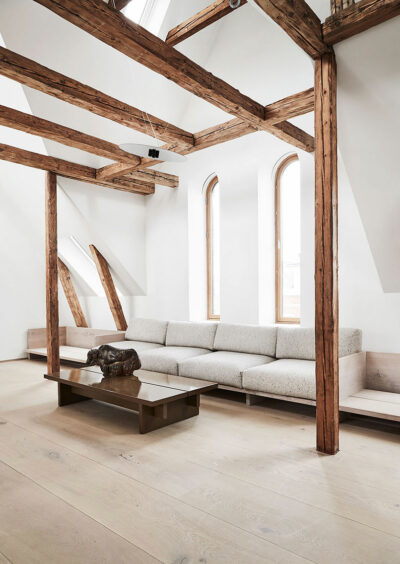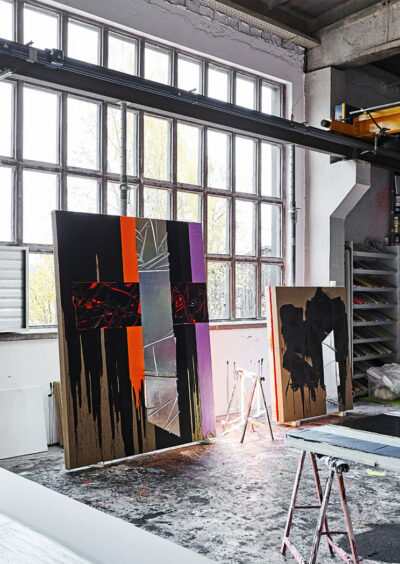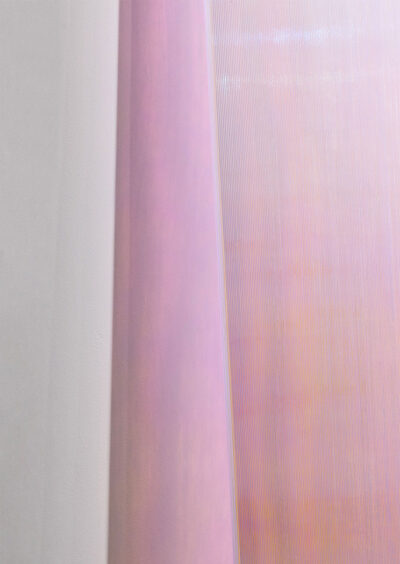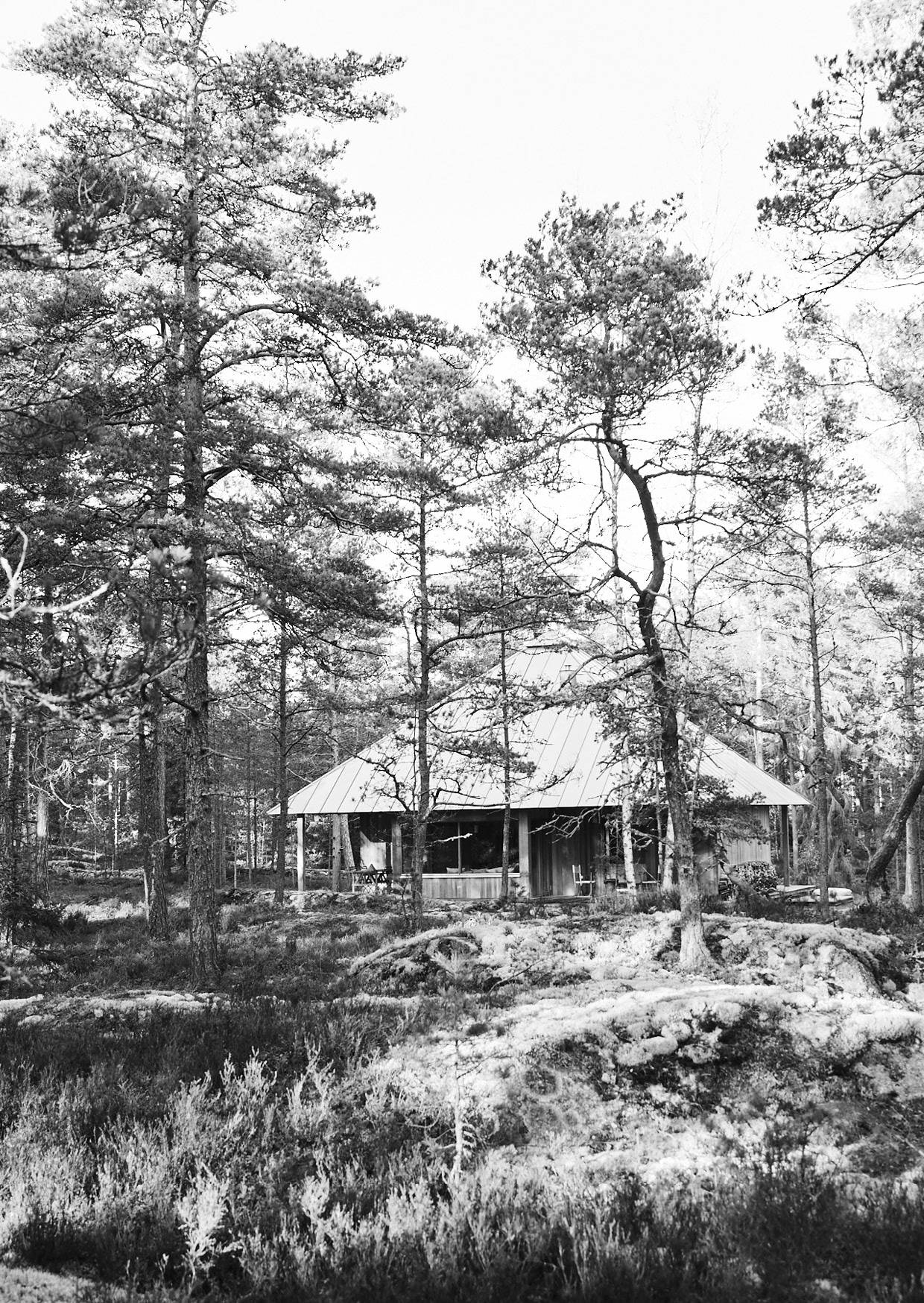
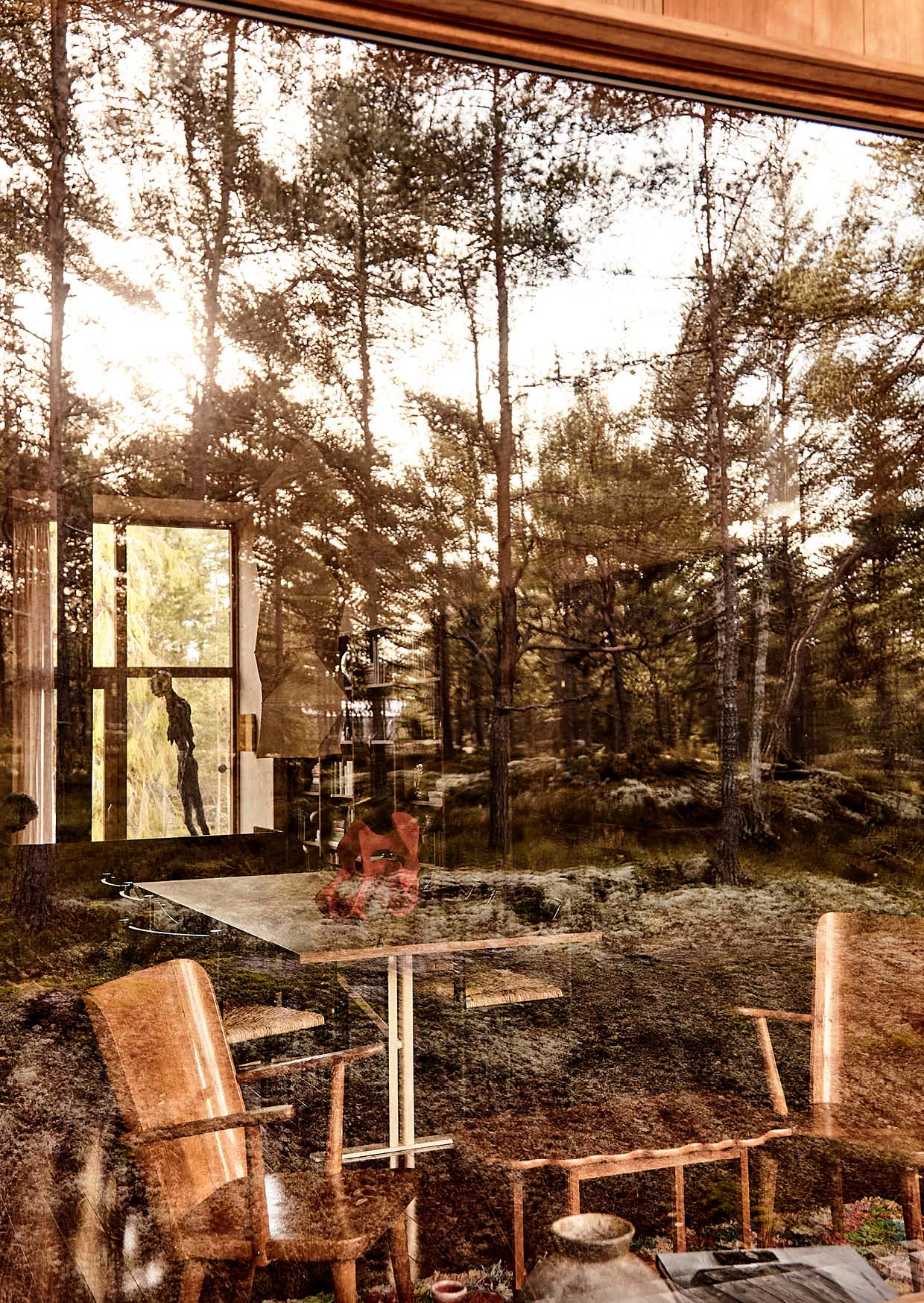
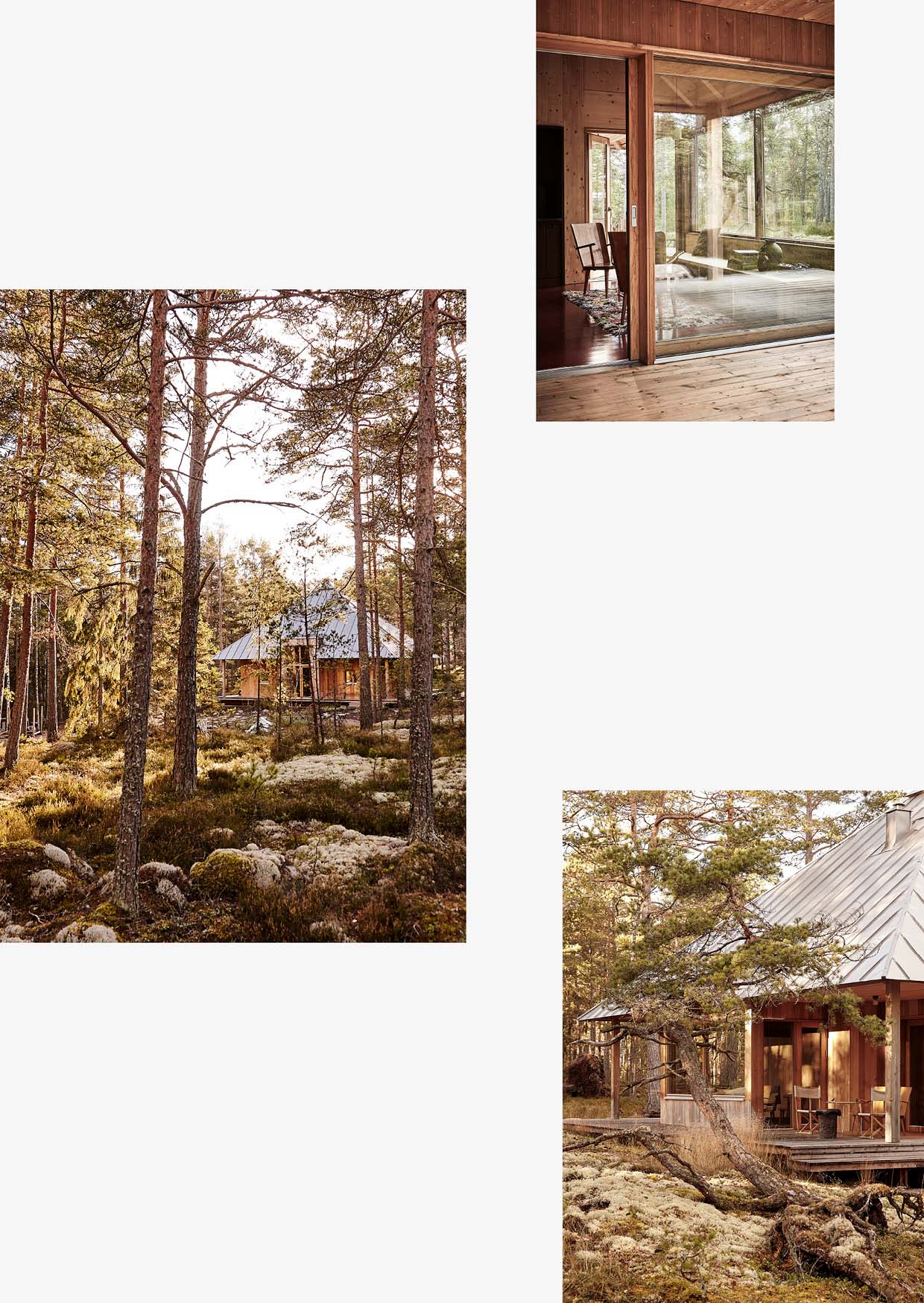
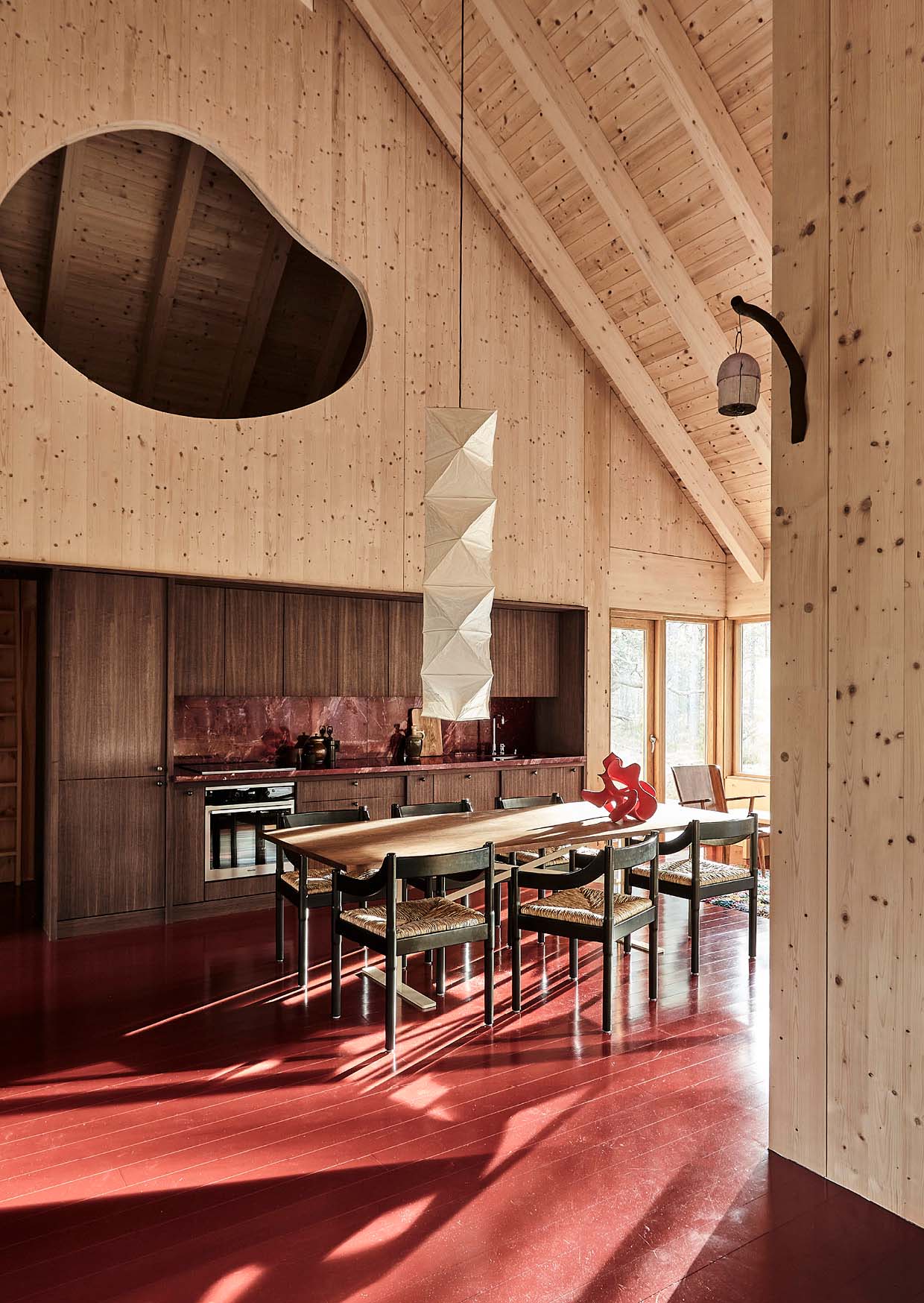
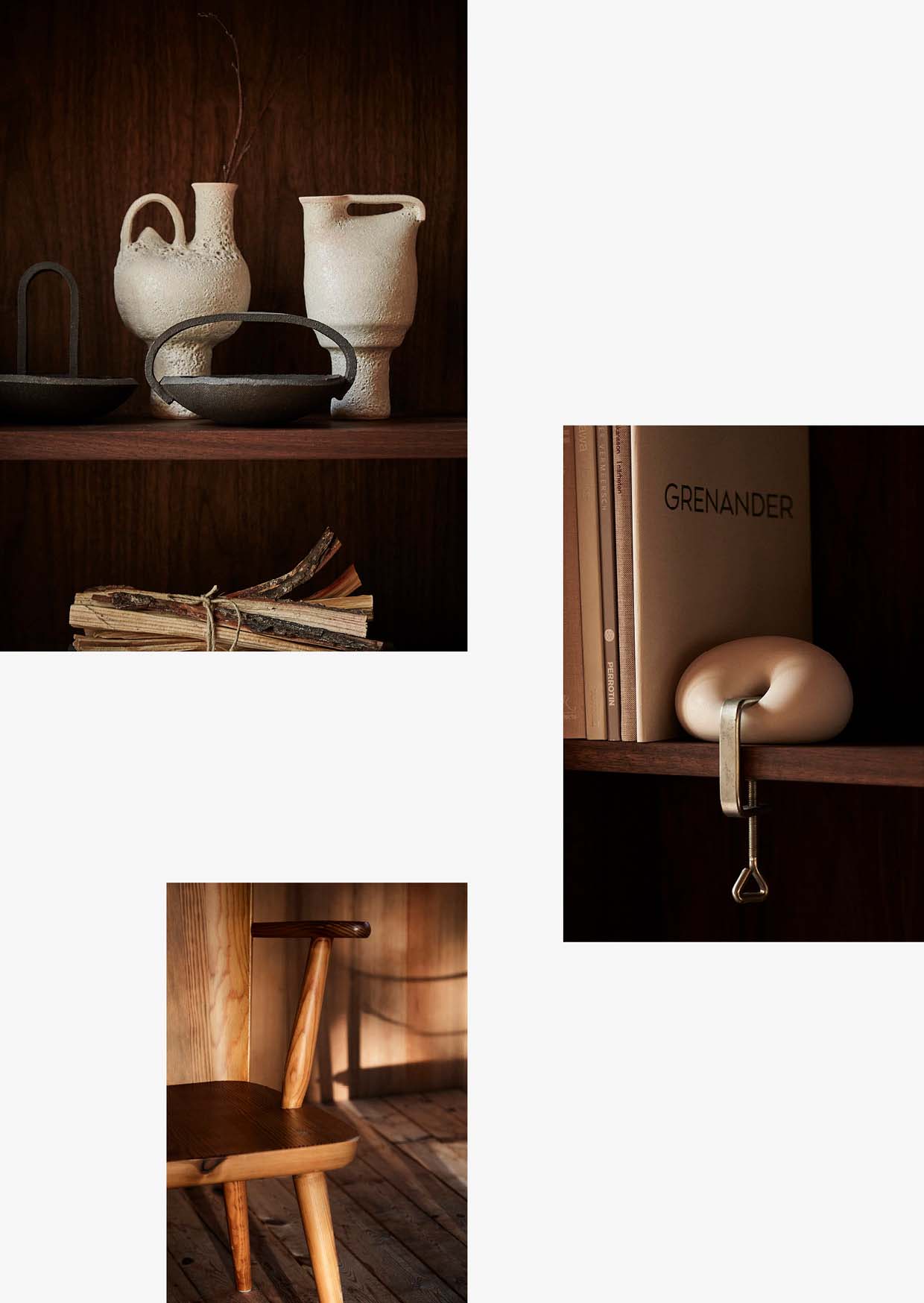
prINCIPLES OF FREEDOM
— HALLERÖD HOUSE
home
On the island of Blidö in the Swedish archipelago, Halleroed founders, Christian and Ruxandra Halleröd, found the freedom to design for pleasure within a forest of fir, pine and juniper trees. The house, with its irregular four-pronged shape unified by a high gabled roof, became an exploration of their intuitive process as they abandoned the structure of their professional projects that include ground-breaking retail interiors. They allowed themselves to be more eclectic, aiming for the feel of a cottage, and the cabin has become home to the couple’s collection of art and design. The resulting property is one that expresses pleasure, both simple and luxurious, in thoughtful ways. In Ark Journal Volume V, the conversation between museum Director Kieran Long and the Halleröds ranges across the Swedish architectural canon and their career trajectories as well as their forest home.
STYLING HELLE WALSTED
PHOTOGRAPHY WICHMANN + BENDTSEN
PURE VOLUME AND SPACE — HOME COPENHAGEN
An attic apartment by David Thulstrup inspired by his interiors of Noma restaurant exudes humanity and humility with architectural clarity and grace.
RE RUIN — HOME BERLIN
Building their home amid the ruins of an abandoned GDR property in east Berlin gave artist Anselm Reyle and architect Tanja Lincke the chance to rediscover the beauty of creative freedom.
MAKING THE INVISIBLE VISIBLE – ANN VERONICA JANSSENS
Growing up in Kinshasa, Ann Veronica Janssens would often watch the sunset and sunrise, specifically the deep shades of violets, yellows, pinks and reds that swept across the sky, over the nearby mountains.

PRINCIPLES OF FREEDOM
— HALLERÖD HOUSE
HOME
On the island of Blidö in the Swedish archipelago, Halleroed founders, Christian and Ruxandra Halleröd, found the freedom to design for pleasure within a forest of fir, pine and juniper trees. The house, with its irregular four-pronged shape unified by a high gabled roof, became an exploration of their intuitive process as they abandoned the structure of their professional projects that include ground-breaking retail interiors. They allowed themselves to be more eclectic, aiming for the feel of a cottage, and the cabin has become home to the couple’s collection of art and design. The resulting property is one that expresses pleasure, both simple and luxurious, in thoughtful ways. In Ark Journal Volume V, the conversation between museum Director Kieran Long and the Halleröds ranges across the Swedish architectural canon and their career trajectories as well as their forest home.
STYLING HELLE WALSTED
PHOTOGRAPHY WICHMANN + BENDTSEN




